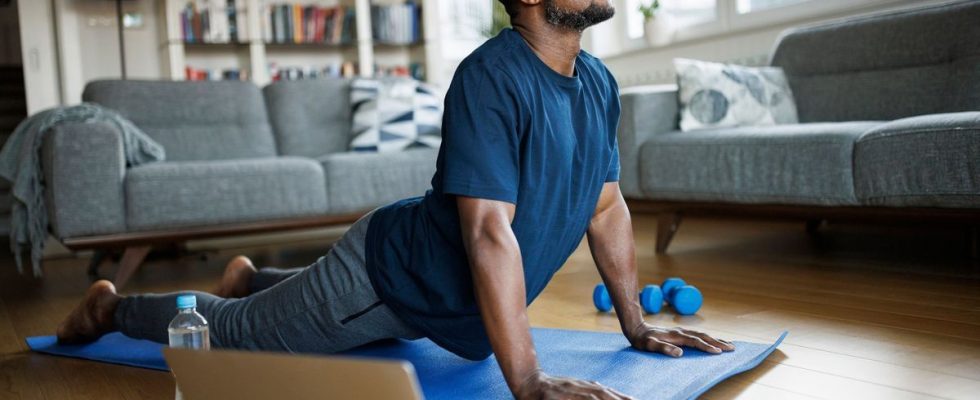Published on
Updated
Reading 3 min.
Teleworking has many advantages for employees, but it is not without health consequences. Considered one of the evils of the century, a sedentary lifestyle has considerably increased with distancing, establishing itself in many countries as a public health priority. However, a new study reveals that simple and accessible actions could limit the effects, starting with practicing around twenty minutes of physical activity per day.
Global health recommendations are clear: an adult aged 18 to 64 should engage in at least 150 minutes of moderate-intensity physical activity per week, and engage in muscle-strengthening exercises at least twice per week. In any case, this is the volume recommended by the World Health Organization (WHO) to maintain “good health”. But the health authority reports at the same time that a third of women and a quarter of men do not spend enough time on this type of activity in the world, and that it is essential to limit sedentary time. Something less and less easy with the generalization of teleworking.
Based on the observation that an adult spends on average 9 to 10 hours per day in a seated position, at least in developed countries, a team of researchers led by scientists from UiT The Arctic University of Norway sought to determine whether physical activity could reduce the risk of death linked to a sedentary lifestyle. And above all to establish a minimum duration of physical activity necessary to reverse the trend. To do this, they analyzed data from 11,989 individuals aged at least 50 years old, equipped with activity sensors, and from four surveys, two carried out in Norway, one in Sweden, and one in the United States, between 2003 and 2019. These data were then linked with death registers.
At least 22 minutes of physical activity
Published in the British Journal of Sports Medicine, this work estimates that 5,943 participants spent less than 10.5 hours sitting daily, compared to 6,042 who exceeded this duration. We also learned that 805 participants died, of whom 357 spent less than 10.5 hours sitting each day, and 448 more than 10.5 hours. And this, over an average follow-up period of 5 years. Data which allows researchers to conclude that prolonged sitting, namely for more than 12 hours, is associated with a 38% increased risk of death compared to a daily sedentary lifestyle of 8 hours. But not for all participants, since physical activity of moderate to vigorous intensity of at least 22 minutes daily would help reverse the situation.
It therefore appears that around twenty minutes of moderate to vigorous physical activity per day could be enough to counterbalance the harmful effects of a sedentary lifestyle. But this is obviously a minimum duration, the researchers specifying that the more this increases, the more the risk of death decreases. “For example, 10 extra minutes per day was associated with a 15% reduced risk of death among people who spent less than 10.5 hours sitting and 35% among those who spent more than 10.5 hours sedentary. , every day“, we can read in a press release. Note also that the duration established by Norwegian researchers corresponds to that recommended, on average, by the WHO.
Favor the stairs or walking
This is an observational study which does not make it possible to establish a direct link between the practice of physical activity and the reduction in the risk of death in sedentary people, especially since certain factors, such as Diet or general health were not taken into account. Which does not prevent the researchers from concluding: “Small amounts of moderate-to-vigorous physical activity may be an effective strategy for improving mortality risk from high sedentary time, while accumulating more than 22 minutes of moderate-to-vigorous physical activity eliminates the risk of ‘high sedentary time“.
Contrary to popular belief, it is not essential to run a marathon, or engage in intense sports sessions, to combat a sedentary lifestyle. According to the WHO, “physical activity [se traduit par] any bodily movement produced by the skeletal muscles which requires the expenditure of energy. Physical activity refers to all the movements that we perform, particularly during leisure time, at the workplace or to move from one place to another.“. It can be walking, cycling, games, or even “active relaxation”, as the world authority emphasizes. Among the simple actions to adopt on a daily basis: taking the stairs rather than the elevator, favor walking or cycling rather than the car for short journeys, or even get off the metro, bus or tram one station before to increase the duration of daily physical activity.

